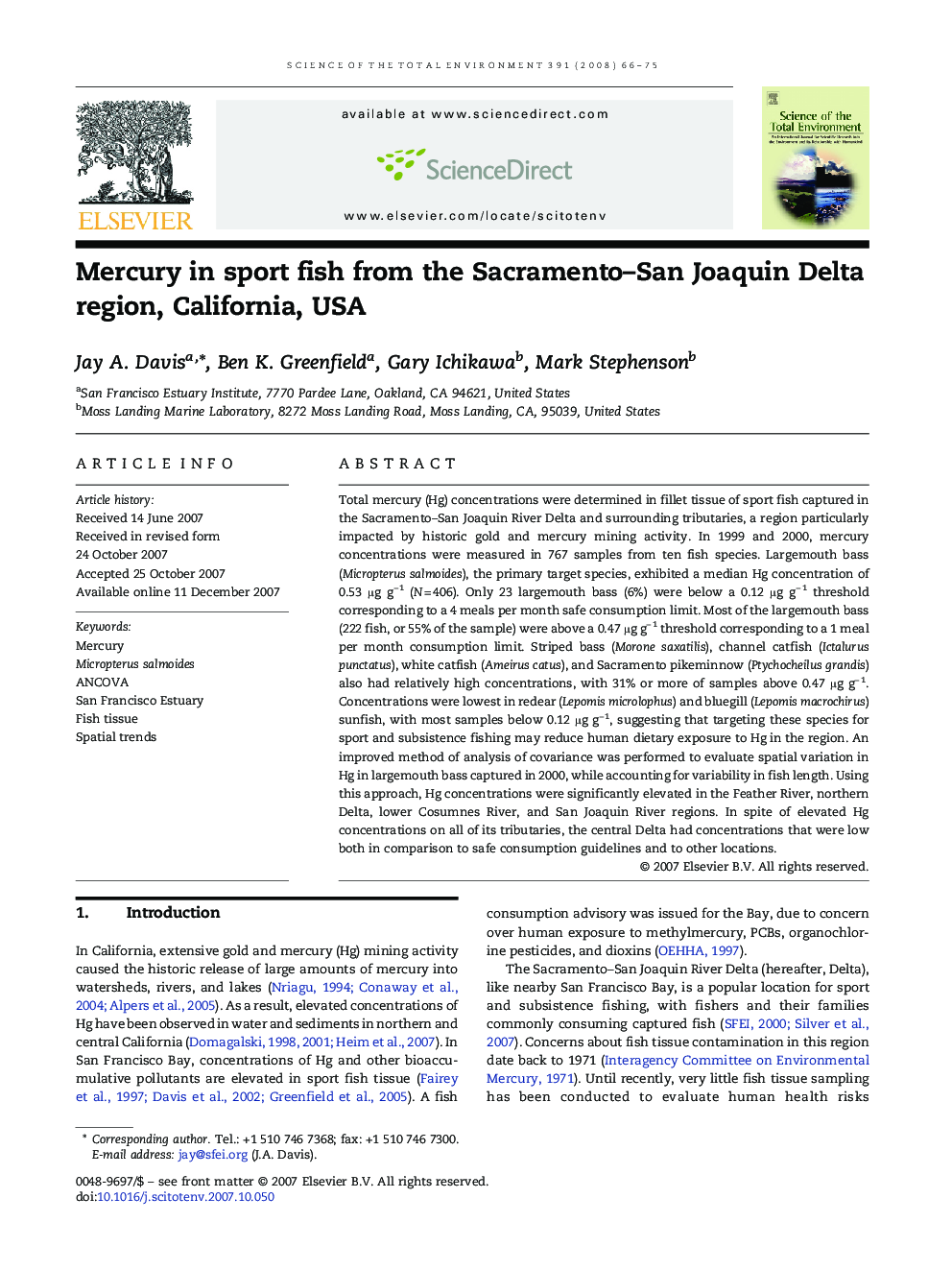| Article ID | Journal | Published Year | Pages | File Type |
|---|---|---|---|---|
| 4433065 | Science of The Total Environment | 2008 | 10 Pages |
Total mercury (Hg) concentrations were determined in fillet tissue of sport fish captured in the Sacramento–San Joaquin River Delta and surrounding tributaries, a region particularly impacted by historic gold and mercury mining activity. In 1999 and 2000, mercury concentrations were measured in 767 samples from ten fish species. Largemouth bass (Micropterus salmoides), the primary target species, exhibited a median Hg concentration of 0.53 μg g− 1 (N = 406). Only 23 largemouth bass (6%) were below a 0.12 μg g− 1 threshold corresponding to a 4 meals per month safe consumption limit. Most of the largemouth bass (222 fish, or 55% of the sample) were above a 0.47 μg g− 1 threshold corresponding to a 1 meal per month consumption limit. Striped bass (Morone saxatilis), channel catfish (Ictalurus punctatus), white catfish (Ameirus catus), and Sacramento pikeminnow (Ptychocheilus grandis) also had relatively high concentrations, with 31% or more of samples above 0.47 μg g− 1. Concentrations were lowest in redear (Lepomis microlophus) and bluegill (Lepomis macrochirus) sunfish, with most samples below 0.12 μg g− 1, suggesting that targeting these species for sport and subsistence fishing may reduce human dietary exposure to Hg in the region. An improved method of analysis of covariance was performed to evaluate spatial variation in Hg in largemouth bass captured in 2000, while accounting for variability in fish length. Using this approach, Hg concentrations were significantly elevated in the Feather River, northern Delta, lower Cosumnes River, and San Joaquin River regions. In spite of elevated Hg concentrations on all of its tributaries, the central Delta had concentrations that were low both in comparison to safe consumption guidelines and to other locations.
